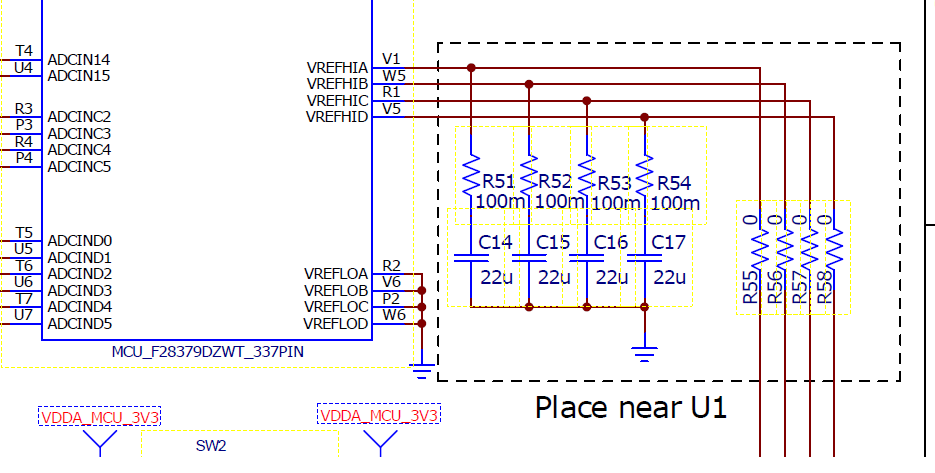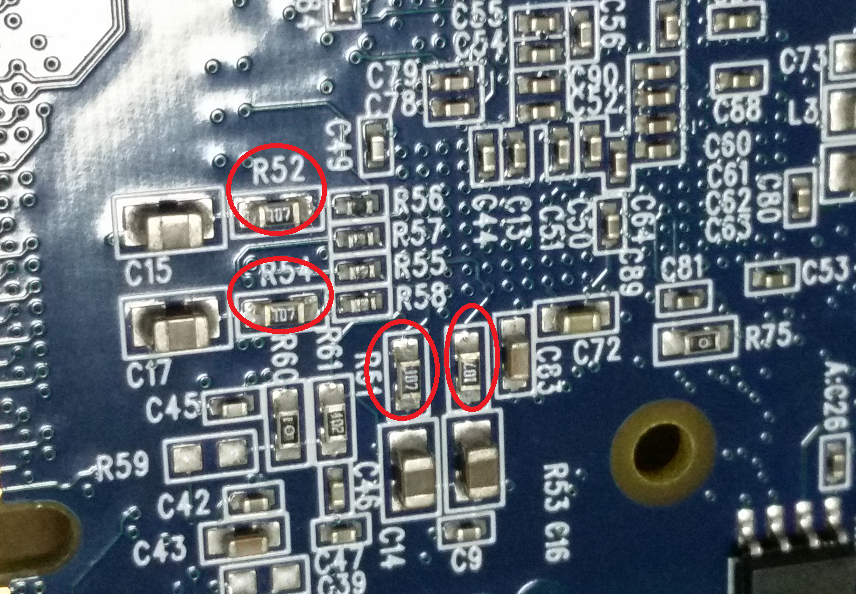Other Parts Discussed in Thread: LMV344
HI everybody
I asked this question before(e2e.ti.com/.../634067).
In controlcard demo (TMDSCNCD28379D),as shown in the diagram below, we can see that the reference pin(VREFHIA VREFHIB VREFHIC VREFHID) is connected to the filter capacitor through 100m ohm.I thought it was a 100mΩ (0.1Ω) connected TMDSCNCD28377D voltage reference pin and a filter capacitor (22uF).Devin Cottier,a TI engineer, explained the reason that is "22uF is a huge load for an op-amp to drive, even one that is good at driving capacitive loads like OPA350. The 100m ohm resistor is to ensure op-amp stability. "
But when we bought controlCAR, we found that The R51~R54 value is 100MΩ(100X10^6) resistors.My questions are as follows. I look forward to your help.
1, is R51~R54 100mΩ (0.1Ω)resistor or 100MΩ(100X10^6) ?Help explain why this resistance Value is used Again.
2、Why use such a large capacitance of 22uF to use a smaller capacitance, such as 1uF?
3、Which parameter of the operational amplifier determines how much capacitance it can drive?
Every question is important to me. We look forward to your reply!




